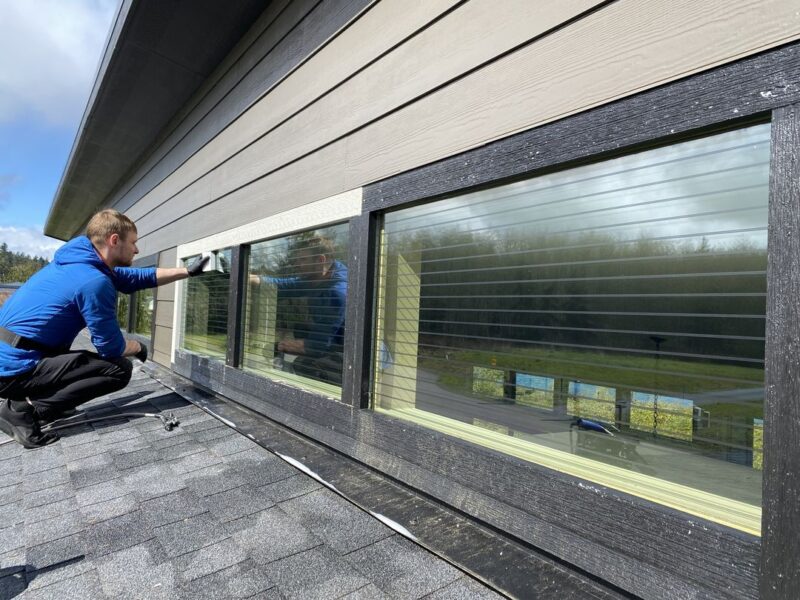Behind the Tint: How Do Window Films Work

Window films do more than improve the look of your windows. They solve everyday problems like reducing glare and keeping rooms cooler. Their rising popularity comes from their ability to improve comfort, privacy, and efficiency at home or in the office. Next, you’ll know how these films work and why they’re becoming essential for so many people.
What are window films, and why are they popular?
Window films are thin layers added to glass that help reduce heat, block UV rays, and add privacy. They have become popular in homes and businesses because they are practical and easy to use. Commercial Window Tinting offers films that control sunlight, save energy, and protect furniture from fading. More people are realizing how these films can make their spaces more comfortable, making them a great choice for anyone wanting an easy upgrade.
Understanding the core technology of window films
Studies show that window films work well. The U.S. Department of Energy says that window films can cut down solar heat by up to 79%, which helps lower cooling costs in the summer. The Skin Cancer Foundation also says that good window films block up to 99% of UV rays, which protects the skin and keeps furniture from fading. These facts show that window films are a smart way to make homes and businesses more comfortable and save energy.
Composition of window films

- A metal or dye layer to control heat and light
- An adhesive layer that attaches the film to the glass
- A scratch-resistant coating that keeps the film looking new
Residential safety film, for example, adds extra thickness to help prevent glass from shattering. With these layers combined, window films block heat, reduce glare, add privacy, and even improve safety—all without changing the view much.
Key functionalities of window films
Window films offer several important benefits for homes and businesses:
- Heat reduction. Keeps rooms cooler during hot days, which helps lower air conditioning use.
- UV protection. Blocks up to 99% of harmful UV rays, protecting skin and preventing furniture from fading.
- Glare reduction. Makes it easier to watch screens or relax without bright sunlight getting in the way.
- Privacy. Adds a frosted or tinted look, which stops people from seeing inside but still lets in natural light.
For those who know more about window films, look at the Visible Light Transmission (VLT) rating. A lower VLT means less light gets through, which is good for privacy or glare control. It also helps to check if the film blocks infrared heat, which keeps spaces cooler without making them too dark.
Types of window film technologies

- Dyed films. These films use a layer of dye to absorb sunlight. This helps keep rooms cooler and reduces glare. They are affordable and can cut down up to 50% of the heat coming through your windows, as the International Window Film Association says. But over time, the dye might fade, which means they won’t work as well forever.
- Metalized films. These films have tiny metal pieces that reflect heat and light away from your windows. They are very good at keeping heat out and can block up to 79% of it. Metalized films can also make the glass stronger so that it is harder to break. The downside is they might interfere with cell phone or Wi-Fi signals because of the metal layer.
- Ceramic films. Ceramic films use advanced ceramic particles to block heat while letting light in. These films are great because they don’t block your view or mess with electronic signals. The Skin Cancer Foundation says they block about 99% of harmful UV rays. They are more expensive, but they are a great choice if you want the best mix of performance and clear views.
- Security films. These films are thicker and help keep glass from breaking easily. If someone tries to break in, or if the glass gets hit by something, these films help hold it in place. Security films are often used in homes where extra protection is important. They also help block some UV rays and add some privacy.
Each type of window film does something different. Dyed films are good if you are looking for an affordable way to stay cool. Metalized films work well for keeping out heat but can block signals. Ceramic films are the best if you need great heat protection without blocking your view. Security films are there for safety, holding broken glass together in case of accidents or break-ins. Consider what matters most to you, and you can find the right type for your needs.
Conclusion
Window films aren’t just for looks—they make a real difference in everyday life. They keep rooms cooler, reduce glare, add privacy, and even protect your furniture from fading. Whether you choose a dyed film to save money, a ceramic film for clear views, or a security film for extra safety, there’s something for every need. At Commercial Window Tinting, we provide a wide range of window films that suit different needs, helping you choose the right solution for your home or business.

Request Quote
Illuminate Your Space: Window Tinting Excellence Awaits. Request a Quote for Customized Solutions, Blending Style, Comfort, and Energy Efficiency. Transform Your Windows Today!